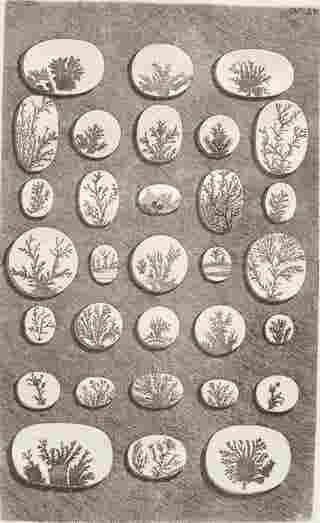Contemporary Illustrators
Sally Bensusen
Scientific illustration was not Sally Bensusen’s first career path. While working as a computer programmer with the NASA/Goddard Space Flight Center and as an astronomer at the United States Naval Observatory in Washington, D.C., she discovered that she could combine her scientific background and her personal interest in art to become a full-time scientific illustrator. She has pursued this career since 1981. At first glance, her pieces appear to be accomplished works of art, but on closer inspection it becomes clear that they have been created in the service of science. Her illustrations teach, enlighten, and tell a story.
Bensusen found inspiration in the work of other artists; some were scientists, others were visionaries. She is a devotee of early science fiction films, enjoying the way that a fresh perspective can shake up expectations. She has sought to add that quality of surprise to her own work, bring the viewer up short, encouraging them to pay attention, to take a closer look, to be curious and questioning. She believes that curiosity and questioning lead to discovery and inspiration, and are the keys of creativity.
Bensusen’s work is a regular feature of many scientific publications. She has been commissioned by the National Geographic Society, Smithsonian, Scientific American, Horticulture, Ranger Rick, The Nature Conservancy and more. For years, her work appeared on every cover of the National Science Foundation's signature magazine, Mosaic. She developed and illustrated the monthly “Biomechanics” column for the magazine Natural History, working closely with the featured scientists. Her large-format work has included a 50-foot mural for the National Aquarium in Baltimore, as well as posters for the Smithsonian Institution, the National Science Foundation, Great Smokies National Park and the USDA Forest Service, and signage for the National Zoo in Washington.
Today Bensusen continues to run her own very successful studio near Washington, DC. As an illustrator of international renown, she presents lectures and workshops on both illustration and business practices for her colleagues. Recently Bensusen’s career has taken her full circle, once again working with the NASA Goddard Space Flight Center, this time as a Multimedia Specialist providing art, animation and web content for scientists studying the birth of the universe.

